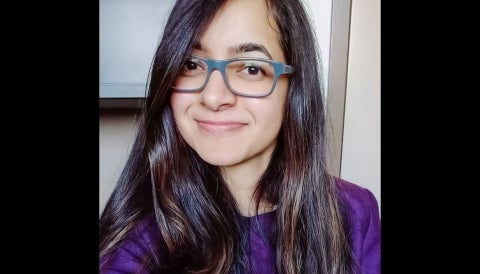
By Regina Stracqualursi
For millions of people across the globe, medications mean the difference between life and death. For others, they also mean the difference between comfort and pain, and living a normal life versus being limited in daily activities. While new medications have the power to both save lives and improve quality of life for patients with chronic health conditions, the process of bringing a new medication to market for patients in need can take more than a decade and can cost billions of dollars.
Bhanushee Sharma, who recently completed her Ph.D. in chemical engineering at Rensselaer Polytechnic Institute, was determined to solve this problem. As part of the Artificial Intelligence Research Collaboration (AIRC), a joint effort between Rensselaer and IBM to advance AI research, she worked on a project aimed at improving the drug discovery process through artificial intelligence (AI) and machine learning techniques.
The current drug discovery process involves both preclinical research, which tests drugs in cells or animals, and clinical research, which tests drugs in people. Sharma, who was advised by Professor Jonathan Dordick and Professor James Hendler at Rensselaer and mentored by Payel Das, research staff member at IBM and manager of AI science at the Thomas J. Watson Research Center, looked at data collected in both preclinical and clinical trials to develop machine learning models that predict the toxicity of drugs before they enter testing in humans.
“Even though a large number of drugs are discovered, very few are actually approved because they end up being toxic in humans or not effective in humans,” Sharma said. “If we have a better idea of the toxicity of these drugs, then we can design drugs that are more likely to receive approval.”
While machine learning models have been developed to predict drug toxicities, many of them have been developed in a way that humans cannot understand. Therefore, one of Sharma’s goals was to develop a model that explains predictions so that scientists can better understand why a prediction has been made. Her explainable AI-based model paves the way for models that scientists can interact with more directly.
“We have many different diseases that we are still trying to find drugs for,” she said. “If we have a quicker and less costly drug discovery process, then we can combat more diseases more quickly.”
Sharma, who graduated in August, plans to enter the biotechnology or pharmaceutical sectors where she hopes to continue to apply machine learning and AI techniques to improve human health.
